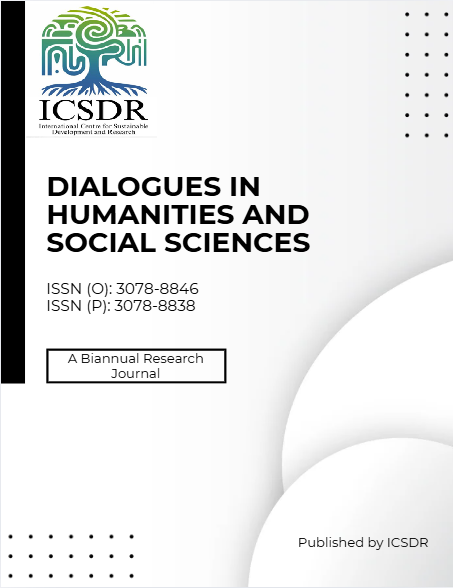Pakistan’s Role in the Shanghai Cooperation Organization (SCO) from 2011-2024: A Comparative Analysis to Other Member States
DOI:
https://doi.org/10.71261/dhss/3.1.17.28Keywords:
Shanghai Cooperation Organization (SCO), Foreign Policy, Regional ConnectivityAbstract
This research explores Pakistan’s experiences as the SCO member from 2011 to 2024 as well as the purpose and dynamics of its membership, its calculating interests, an impact on the organization’s decision-making processes, and the compatibility of its SCO activity with its general foreign-policy goals. Qualitative research methodology was adopted by using secondary data. This work explores Pakistan’s politics of security economic cooperation and multilateralism. The research outcomes show Pakistan’s transformation from a mere watcher to a player utilizing the SCO framework for combating terrorism, stabilizing the region, and particularly for the CPEC in boosting economic cooperation and integration. Nonetheless, Pakistan was effective in counterterrorism and connectivity, and it still has a less-powerful role in compared with the Russia and China that set the SCO’s strategic narrative. Despite noting that Pakistan has fully associated itself with the goals of the SCO for instance through having a special place in the Regional Anti-Terrorist Structure (RATS), the study points out issues like limited decision making power, economic constraints and bottled up bilateral conflicts with India that sometimes complicate multilateral interactions within the SCO forum. However, Pakistan’s membership in SCO is evidence of changing its foreign policy course in a more multipolar direction, deepening its activity in South and Central Asia, and explaining the position of regional associations in the creation of governance and addressing new threats.
Downloads
Published
Issue
Section
License
Copyright (c) 2024 Dialogues in Humanities and Social Sciences

This work is licensed under a Creative Commons Attribution-NonCommercial 4.0 International License.
DHSS is licensed under a Creative Commons Attribution-NonCommercial 4.0 International license (CC BY-NC 4.0). This license permits users to use, reproduce, disseminate, or display the article provided that the authors are the original creators and that the reuse is restricted to non-commercial purposes, i.e., is attributed to research or educational use, provided that the work is properly cited.

